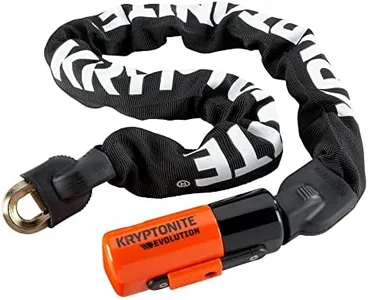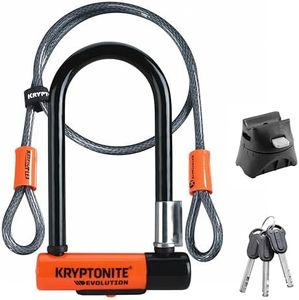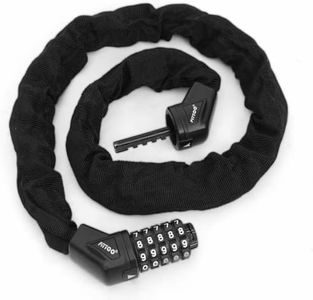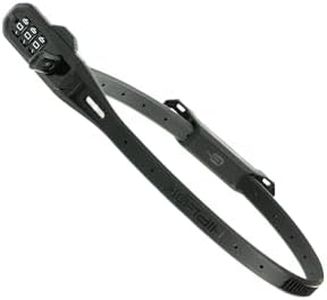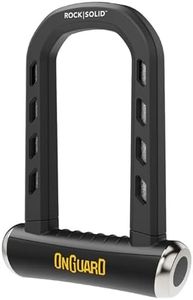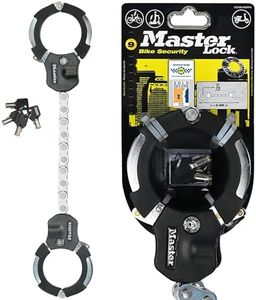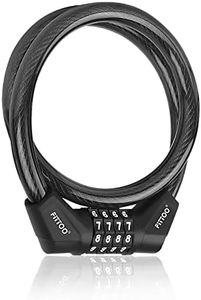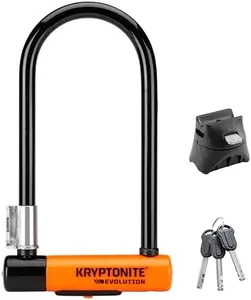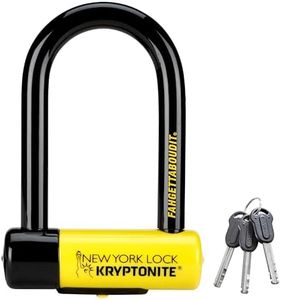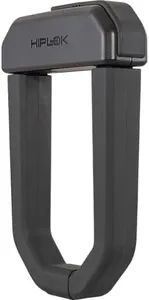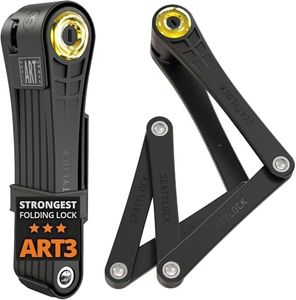We Use CookiesWe use cookies to enhance the security, performance,
functionality and for analytical and promotional activities. By continuing to browse this site you
are agreeing to our privacy policy
10 Best Bicycle Locks
From leading brands and best sellers available on the web.Buying Guide for the Best Bicycle Locks
Choosing the right bicycle lock is essential for keeping your bike safe from theft. There are many types of locks, and the best one for you depends on your security needs, how you'll use the lock, and your typical parking situations. Knowing what to look for can make a big difference in protecting your bike and making locking up quick and convenient.Lock TypeLock type refers to the design of the lock, with the main types being U-locks (D-locks), chain locks, cable locks, and folding locks. U-locks usually offer the best balance of security and convenience, making them a popular choice for urban environments. Chain locks can be very secure if the chain is thick and made of hardened steel, but they can be heavy to carry. Cable locks are lightweight and flexible but generally provide the least security, great for quick stops or as a secondary lock. Folding locks are compact and easier to carry, offering moderate security. Think about where and how long you leave your bike unattended - higher risk areas require sturdier locks, while lower risk areas or short stops might allow for lighter options.
Security LevelThis rating indicates how resistant the lock is to various forms of attack, like cutting, picking, or levering. Brands often use their own scales, but generally, locks are divided into low, medium, and high security. Low-security locks are more suited to low-risk situations, such as when you'll be close by or stopping briefly. Medium-security locks offer a step up, ideal for parking in moderately safe or busy areas. High-security locks are the most robust and are best if you'll be leaving your bike unattended for long periods, or in theft-prone locations. Consider how valuable your bike is to you and how attractive it might be to thieves to help determine the level you need.
Size and WeightThe size of a lock affects how easy it is to carry and how versatile it is when locking your bike to different objects. Larger locks are easier to fasten around thick posts but are heavier and bulkier to transport. Smaller locks are lighter and easier to carry but may limit your options for what you can attach your bike to. Weight also plays a role in comfort—think about how you will carry the lock while riding. Choose a size that fits your common parking scenarios and a weight that won’t make your ride unpleasant.
Shackle Thickness or Chain Link SizeThis is the width or diameter of the metal part that secures your bike, and it's a key factor in preventing cutting attacks. Thicker shackles or chain links are usually harder to cut through. For higher security, look for locks with shackles or links of at least 13mm or more, which are typically resistant to hand tools like bolt cutters. Thinner shackles are easier to carry but provide less protection. If you park in safe places or don’t leave your bike unattended for long, a thinner shackle may be enough; for higher-risk areas, go for thicker metal.
Locking MechanismThe locking mechanism determines how the lock is opened and closed, as well as how resistant it is to picking or tampering. Cylinder locks and combination locks are common types—the best ones resist picking and drilling. Combination locks are easy to use since you don’t need a key, but key-operated locks generally offer stronger security. If you sometimes misplace keys, a combination lock may be more convenient, but if maximum security is a priority, key locks are usually better.
Weather ResistanceLocks left outdoors are exposed to the elements, so weather resistance is important to prevent rust and make sure the locking mechanism keeps working smoothly. Some locks come with weatherproof coatings, covered keyholes, or rust-resistant materials. If you’ll be locking your bike outside in rain or snow, look for these features to ensure long-term reliability. For indoor or dry use, this may be less important.
